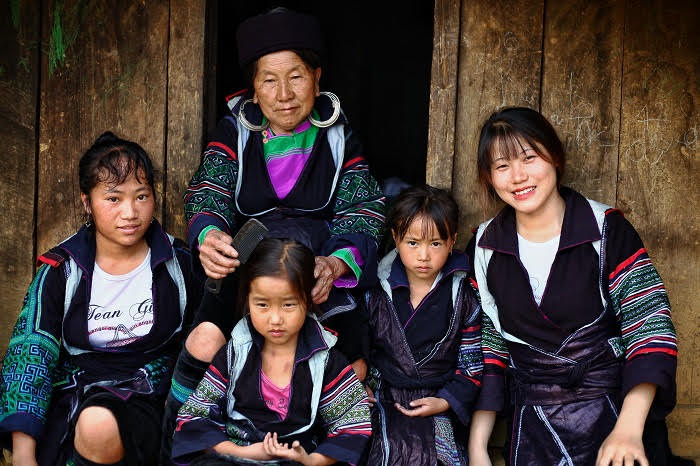More than 30 Vietnamese national cultural traditions added
Minister of Culture, Sports and Tourism Nguyen Van Hung has recently approved a decision to include 30 more practices, representations, and knowledge in the list of national intangible cultural heritage.
| The Black H’mong women in Sapa, Lao Cai Province are renowned for their skill in weaving cloth from hemp and dyeing it a deep indigo blue. Photo: Sapa Ecolodge |
This presents a great opportunity for localities to promote heritage conservation and transform them into tourist attractions that will attract more visitors.
The newly recognized intangible heritage includes the craft of making Lai Vung spring rolls in Dong Thap Province, the Liem Thuan drum singing in Ha Nam Province, the Vovinam martial arts in Ho Chi Minh City, the Bong Dien Festival in Thai Binh Province, the art of making Black H’Mong ethnic group costumes in Lao Cai Province, the Co Lao ethnic group forest worship ceremony in Ha Giang Province, Kieu singing in Quang Binh Province, and many others.
The traditional costumes of the Black H’Mong people in Sapa are entirely handmade using natural materials. The fabric is made from linen fibers that are dyed with natural indigo and finished with beeswax.
The traditional costumes reflect the Black H’Mong people’s close connection to their environment and their way of thinking through their weaving skills, pattern design, and motifs on the costumes.
According to the Lao Cai Tourism Department, the local government, with the support of businesses, is currently assisting locals in preserving this folk craft, making it one of the unique intangible heritages of Sapa Town.
| Vovinam Martial Arts performance. Photo: Tan Viet |
Hat Kieu or Kieu singing is a unique folk art practiced by the people living on the northern bank of the Gianh River in the central region of Quang Binh Province. Based on the masterpiece “The Tale of Kieu” by the great poet Nguyen Du, various related arts have emerged in the area, including Kieu fortune telling, Kieu chanting, Kieu singing, and others.
Among them, Kieu singing is the most captivating folk art that incorporates a range of folk performances such as singing, dancing, and games. This type of folk art is popular in Quang Kim and Quang Phuong communes in Quang Trach District, Chau Hoa in Tuyen Hoa District, and Quang Minh and Quang Thuy in Ba Don Town.
On the other hand, Vovinam, another recognized heritage, was established in 1936 by Master Nguyen Loc and has become one of the most popular styles of martial arts in Vietnam and around the world. The Vietnam Vovinam Federation reports that there are over 2.5 million practitioners of this martial art in 70 countries and territories.
Vovinam utilizes various body parts such as hands, elbows, legs, and knees for self-defense. Martial artists are also trained to use weapons such as swords, knives, and fans.
The remarkable growth of this art form is evident in the establishment of the World Federation, as well as continental federations in Asia, Europe, and Africa.
The post More than 30 Vietnamese national cultural traditions added appeared first on Vietexplorer.com.


Comments
Post a Comment